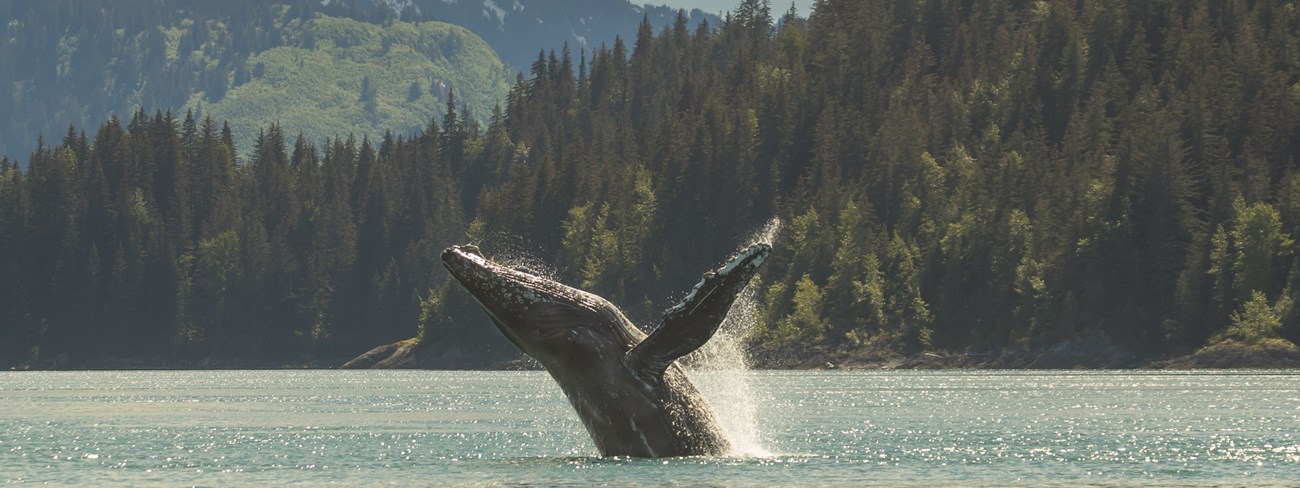
JuneHarbor seals give birth to pups on icebergs around tidewater glaciers in Tracy Arm and Glacier Bay. Humpback and killer whales are frequently observed in large sounds and straits of Southeast throughout the summer. Sitka black-tailed deer move from forests to alpine areas for summer.Sooty grouse with young may be seen in alpine areas. Most songbirds are nesting and tend to quiet down, but unpaired birds will continue singing their courtship songs. Young from the earlier nesting birds will begin fledging; watch for fledged young. Pairs of marbled murrelets can be seen on coastal waters throughout the region. Most waterbirds are nesting on inland lakes and rivers, so fewer are present along the coast. Watch for rufous hummingbirds around flowerbeds and feeders during June and July. They are attracted to anything that is bright red. Young Dolly Varden char and silver salmon can be seen along the margins of most streams. Sockeye (red) salmon enter spawning in late June. JulySockeye (red) salmon migrate into spawning streams in peak numbers. Brown and black bears fish for spawning salmon along rivers and streams.Sea otters can be seen in kelp beds along the outer coast of Southeast Alaska islands and in Icy Strait. Singing activity of passerines declines dramatically in early July. Young begin fledging. Young woodpeckers often call from the nest hole, and parents feeding young are east to watch. Some waterfowl molt their wing feathers in late summer. Flocks of molting geese occur on some alpine lakes. Most ducks are solitary and stay well-hidden during their wing molt. AugustThroughout the summer, mountain goat nannies and their young travel in nursery groups. In contrast, billies usually travel alone or in small groups of two or three animals. Deer can be seen in alpine and subalpine areas at dawn and dusk.Canada geese begin reappearing in salt marsh areas and remain common through fall. Shorebirds begin passing through on their way south. Watch for pectoral, least, semipalmated, and western sandpipers, greater and lesser yellowlegs, red-necked phalaropes, whimbrels, short-billed dowitchers, and golden and black-bellied plovers. American pipits and rosy-finches form large flocks and can be observed in alpine areas. Chum and pink salmon begin salmon runs. They can be seen at spawning areas near coastal towns. Red salmon are spawning in Steep Creek near Mendenhall Glacier. Viewing areas are provided along the road. |
Last updated: December 29, 2023
